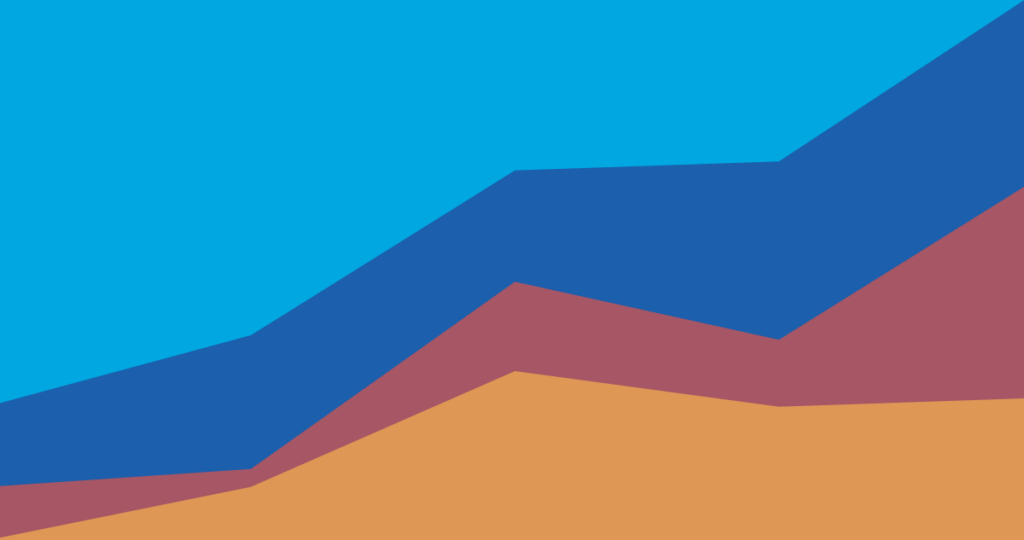All Oregonians deserve to live in dignity — to enjoy economic security and the possibility to thrive. This is doable. Oregon, after all, is a prosperous place, with enough resources for everyone to live well.
But for a vast number of Oregonians today, economic security feels like an impossible dream. At a time when the income of the richest Oregonians has reached record highs, many low-paid Oregonians can’t afford basic necessities such as food, housing, and health care. Economic insecurity afflicts Oregonians of all races. As a result of an economy designed to benefit the white and wealthy, it is especially pronounced among Black, Indigenous and other Oregonians of color.
Data for the People provides the latest publicly-available data on the economic well-being of Oregonians. To better reflect the realities of particular communities, wherever possible we break down data by race and ethnicity using Race, Ethnicity, Language, and Disability (REAL-D) categories developed by the Oregon Health Authority (OHA). For more information about this process, as well as data sources used throughout, see our detailed methodology.
The data make clear the need for Oregon to create an economy that is more equitable in its prosperity. OCPP’s Action Plan for the People lays out a policy roadmap to shift the economic system to benefit all Oregonians, not just the wealthy few. We invite you to explore this data set.
Economy
Economic inequality
Survival budget
Hunger
Housing
Health care
Employment
Gender pay gap
Unionization
This project would not have been possible without the knowledge shared by our community partners, who offered their expertise to us throughout this process: the Urban League of Portland, the Native American Youth and Family Center (NAYA), the Coalition of Communities of Color (CCC), the Asian Pacific American Network of Oregon (APANO), the Immigrant and Refugee Community Organization (IRCO), and Pineros y Campesinos Unidos del Noroeste (PCUN). We are also grateful to the work done by OHA on REAL-D that made this analysis possible.
We are grateful to the staff of these organizations, as well as many others who have contributed to our knowledge over the years, for their help in making Data for the People a tool that can be used to empower communities working for dignity for everyone.
Oregon’s economy outpaces national growth
Oregon is a prosperous state, with the means to ensure that all Oregonians enjoy economic security and have the possibility to thrive. For decades, Oregon’s economy has outperformed the national economy — an economy of one of history’s richest nations. Oregon’s economy has performed exceptionally since 1997, the start of the most recent official data set on state economic growth. Despite three recessions, including the Great Recession and the recession triggered by the COVID-19 pandemic, Oregon’s economy has expanded over the past two decades. At the same time, Oregon workers are quickly becoming more productive. For many years, Oregon’s productivity – the state’s economic output per worker – increased more rapidly than national productivity.
Economic gains flow to the rich
Over the past four decades, the rich — especially the super-rich — have been capturing an ever larger share of the benefits of the economy. While the incomes of the top 1 percent and top 0.1 percent have skyrocketed, the income of the typical Oregonian has largely stagnated. Though the corrosive effects of vast income inequality have been clear for some time, COVID-19 provided a stark reminder of the instability and damage inequality produces. Perhaps most obviously, the concentration of income among a relative few left large portions of Oregonians without the means to build savings, invest in their future, and be prepared to weather the economic downturn.
Many Oregonians aren’t paid enough to meet a “survival budget”
Despite a strong economy, many Oregonians struggle to stay afloat. A legacy of exclusionary policies and persistent racist structures and practices exacerbate these challenges among Black, Latino, and Indigenous communities. While the government measures economic hardship by the outdated official poverty line, a methodology developed by the United Way provides a more realistic estimate of what it takes to make ends meet. The United Way’s Asset Limited, Income Constrained, Employed (ALICE) measure focuses on the essentials: housing, child care, food, transportation, health care, and means of basic communication such as a phone. In Oregon, many families aren’t paid enough to meet a “survival budget” that covers these necessities.
Many Oregonians don’t know where their next meal is coming from
Food is about as basic as needs get, yet more than 400,000 Oregonians either don’t know where their next meal is coming from or are going hungry. Many struggling with food insecurity live well above the official poverty line. In fact, for many Oregonians trying to get food on the table, their income is too high to be eligible for government programs that could help meet their food needs, such as the Supplemental Nutrition Assistance Program (SNAP).
The human cost of food insecurity is profound. Food insecurity undermines physical and mental health. It particularly harms children starting even before birth, who suffer greater rates of birth defects, developmental delays, and lower educational outcomes. Despite a strong economy, the state has made troublingly slow progress in reducing hunger in recent years.
Racist policies that have segregated certain communities into lower paying jobs have also led to racial disparities in access to food, with some communities experiencing “food deserts”. Black and Latino families in particular face significantly higher rates of food insecurity. The impact of food insecurity on children in these households is just one way intergenerational poverty is perpetuated.
Oregon faces a devastating housing crisis
Many Oregonians cannot afford a safe and stable place to live. This crisis stems from a lack of housing supply and the rising cost of housing. The COVID-19 pandemic has only served to escalate this housing crisis. One in three Oregonians are “cost-burdened” by their housing expenses, meaning they spend more than 30 percent of their income on housing. Renters are the most likely to face high housing costs. Due to our state and nation’s history of exclusionary housing policies and discriminatory practices, Oregonians of color are more likely to be renters. Many homeowners also struggle to keep a roof over their heads. Not surprisingly, low- and moderate-income households are far more likely to experience economic hardship due to the cost of their housing.
For Oregonians struggling to pay their rent or mortgage, the cost of housing makes it even harder to afford other basics such as healthy food and child care, which are already out of reach for many. Ultimately for some, unaffordable housing leads to evictions and increases the likelihood of becoming homeless. Housing instability, in turn, undermines the physical and mental health of families and the ability of children to do well in school.
A note on homeownership for Indigenous Oregonians: Under federal law, land on Native American reservations is held in trust and managed by the U.S. government. As a result, Native Americans face significant barriers to homeownership. Due to limits in the data, we are unable to determine the extent to which this problem affects the estimates in this publication. However, because the way this methodology seeks to increase sample sizes of smaller populations, it is likely that homeownership rate estimates primarily reflect the reality of individuals living outside of reservations.
Oregonians continue to face barriers to health care access
Despite the gains created by the 2010 Affordable Care Act, many Oregonians remain without health insurance coverage. Many of those without insurance are low-paid workers, young adults, Oregonians of color, and non-citizen Oregonians. In recent years, Oregon has gone beyond the Affordable Care Act in extending the state’s Medicaid program — the Oregon Health Plan — to populations kept out of the federal law for discriminatory reasons. Even so, some groups of immigrant Oregonians — overwhelmingly people of color — remain excluded. Beyond the matter of having health insurance, issues such as racial discrimination in health care delivery and health care costs remain a big burden for Oregonians.
A strong labor market has not turned into real gains for workers
Before the major disruptions caused by the COVID-19 pandemic, Oregon’s unemployment rate was the lowest it had been in decades. However, this era of low unemployment did not benefit all Oregon communities equally. While Oregon’s unemployment rate had reached record lows before 2020, the labor market remained weaker for some communities of color and much of rural Oregon.
The COVID-19 pandemic worsened these disparities – pandemic job losses were concentrated among low-wage workers in specific industries. Almost half of initial unemployment insurance claims at the beginning of the pandemic were from industries with average annual wages of under $40,000, including accommodation and food services, and retail trade. As a result of systemic racism, people of color in Oregon tended to work in low-wage industries that were hit hardest. And despite the overall jobs recovery after the pandemic recession and some wage gains, the wages of many Oregonians remain stuck in a long-term pattern of stagnation relative to the cost of living.
Pay discrimination costs women thousands every year
Pay discrimination remains a barrier to economic security for women. Little progress has been made in recent years, the typical woman in Oregon still earns significantly less than a similarly situated man. The gap in pay between men and women can amount to thousands of dollars every year, with a typical Oregon woman working full time earning about $10,000 less than a similar man. The pay gap for women of color is even more severe. Compared to non-Hispanic white men, women of color earned between 50 to 75 cents on the dollar. The pay gap exists when women of color are compared to men of the same race or ethnicity as well. Gender and racial discrimination in pay can stand between a woman and a stable financial life.
The decline of unionization has contributed to inequality
Strong unions are key to improving wages and working conditions. By strengthening the hand of workers in bargaining for good wages, strong benefits, and a secure retirement, unions help workers capture more of the fruits of the economy. A union’s presence in an industry boosts wages for non-union workers by virtue of its impact on industry-wide wage standards.
But union representation has been falling for decades, as employers have made it harder for workers to keep or form a union. The decline of unionization coincides with Oregon’s top income earners garnering an ever-larger portion of the state’s economic pie. A recent wave of worker organizing, both nationwide and here in Oregon, in industries previously closed to unions provides hope that the long-term decline of unionization may be changing.
A note on small sample sizes
In an effort to provide timely data on the economic realities faced by Oregon’s communities of color, wherever possible we provide data broken down by the race and ethnicity categories used by the Oregon Health Authority’s REAL-D (race, ethnicity, language, and disability) surveys. However, this effort to be inclusive runs up against the limitations of the American Community Survey (ACS) data used in much of this analysis. Small sample sizes for some groups means that some data cannot be reported with confidence. If only a very small group of people representing a community are surveyed, data can be skewed, painting an inaccurate picture. In conversation with community members, we chose to include a race or ethnic category label with a too-small sample size in our charts but with the data suppressed (not shown). These instances are shown using a placeholder data point of 1 percent in the charts, along with expanded details that note the suppression of the data point. This approach seeks to respect the community’s desire to be visible and represented in this work, and to highlight the need for the ACS and other datasets to improve surveys of these racial and ethnic groups. For a more detailed explanation, see our full methodology description.
Methodology
Oregon Center for Public Policy’s Data for the People provides data on the economic well-being of Oregon workers. This body of data replaces and builds on our previous State of Working Oregon series. To make the information more accessible, we provide the data in an interactive format, updated as new data become available. The following describes our methodology for producing Data for the People.
Data on Oregon’s economy
Unless otherwise noted, all indicators on Oregon’s economy are OCPP analysis of Bureau of Economic Analysis data.
Income inequality data
Unless otherwise noted, all indicators on income inequality in Oregon are OCPP analysis of Oregon Department of Revenue data.
Our narrative uses the terms “Oregonians” and “taxpayers” interchangeably. Unless otherwise noted, these words refer to all Oregon income tax filers. In some instances, Oregon Department of Revenue data are only available for full-year resident income tax filers. In those instances, we note that the data are for full-year filers in the chart’s pop up window.
Calculations for the top one-tenth of 1 percent and the rest of the top 1 percent are based on total income for full-year returns, due to limitations in data availability of other types of returns.
Tax returns with negative adjusted gross income have been excluded.
Data on poverty and income for basic needs
Unless otherwise noted, data on poverty were obtained from the American Community Survey.
To provide a more accurate measure of economic insecurity than the official poverty threshold, we use the ALICE (acronym for “asset-limited, income-constrained, employed”) threshold developed by the United Way. We report data based on the ALICE “Survival” threshold, which is defined as the bare minimum cost of household basics needed to live and work. There are other credible alternative measures of income adequacy we could have chosen, notably, the Living Wage Calculator of the Massachusetts Institute of Technology, and the Family Budget Calculator of the Economic Policy Institute. All three have the benefit of findings for various family compositions and at the county level. We chose to use the ALICE index because we prefer its “survival budget,” which reflects the bare minimum required to meet basic needs, as opposed to what a “living wage” suggests. In addition, unlike the other indices, ALICE offers two threshold options rather than just one – the “survival” threshold and the “stability” threshold, the latter being more reflective of “living wage” income. We opted for the index that gives us flexibility in the kind of threshold we use, depending on the purpose of the analysis.
For our methodology on disaggregation by race and ethnicity using ACS data, see “Disaggregated Data by Race Using the American Community Survey” below.
For information on limitations to 2020 ACS data, see “Note on 2020 ACS Data Limitations” below.
Food insecurity and hunger data
Data for Oregon food insecurity comes from Feeding America’s annual Map the Meal Gap report.
For food insecurity by race, we use estimates from Oregon’s Food Insecurity Rates At The Arrival of COVID by Mark Edwards and Kendra Beck at Oregon State University (OSU). The most recent version of Feeding America’s Map the Meal Gap does include estimates for food insecurity by race, which are more recent than this report. However, the Map the Meal Gap report only includes estimates for white, Black, and Latino Oregonians, whereas the OSU report includes more disaggregated estimates. We opt to report those estimates to include more communities.
Housing data
Unless otherwise noted, housing cost burden and tenure estimates are OCPP analysis of American Community Survey (ACS) data.
For our methodology for disaggregation by race and ethnicity using ACS data, see “Disaggregated Data by Race Using the American Community Survey” below.
For information on limitations to 2020 ACS data, see “Note on 2020 ACS Data Limitations” below.
Health insurance coverage data
Unless otherwise noted, all health insurance estimates are OCPP analysis of American Community Survey (ACS) data.
For our methodology on disaggregation by race and ethnicity using ACS data, see “Disaggregated Data by Race Using the American Community Survey” below.
For information on limitations to 2020 ACS data, see “Note on 2020 ACS Data Limitations” below.
Job market data
For unemployment by race, we use 2016-20 American Community Survey (ACS) estimates. We opt for ACS data rather than Bureau of Labor Statistics data in this instance because the estimates better allow for statistical comparisons between groups.
For all other job market indicators, figures are OCPP analysis of Bureau of Labor Statistics data.
For information on limitations to 2020 ACS data, see “Note on 2020 ACS Data Limitations” below.
Gender pay gap data
Unless otherwise noted, estimates on the gender pay gap is OCPP analysis of American Community Survey (ACS) data.
For this analysis, we utilize the 2016-20 Public Use Microdata Sample (PUMS). Estimates compare median earnings for full-time workers by gender. Full time work is defined as working at least 35 hours per week, and at least 50 weeks per year. While methodologies on the gender pay gap can differ from study to study, this methodology is consistent with similar analyses by organizations such as the Pew Research Center and the American Association of University Women. For information on limitations to 2020 ACS data, see “Note on 2020 ACS Data Limitations” below.
Figures for the gender pay gap by income group are Economic Policy Institute analysis of Current Population Survey data, shared with OCPP.
Unionization Data
Unless otherwise noted, data on union membership is OCPP analysis of data from the Union Membership and Coverage Database, available at unionstats.com. The source provides private and public sector labor union membership, coverage, and density estimates compiled from the monthly household Current Population Survey (CPS) using BLS methods. The Database, constructed by Barry Hirsch (Andrew Young School of Policy Studies, Georgia State University) and David Macpherson (Department of Economics, Trinity University), was created in 2002 and is updated annually.
Note on 2020 ACS Data Limitations
We use the most recent non-experimental 1-year American Community Survey (ACS) data. We do not use 1-year ACS data for 2020, which is considered experimental, and not comparable with data from other years. When using 5-year data, we may include ACS data for 2020, which the Census considers of sufficient quality when combined with other years’ observations to include in analyses of comparisons with other sets of 5-year data.
We use data from the data.census.gov tables whenever possible, because the tables rely on the largest pool of observations and, therefore, enable us to determine statistically significant differences among groups of smaller populations. When data is not available in Census tables, we use the Public Use Microdata Sample (PUMS) data, which relies on a smaller pool of observations.
Disaggregated data by race using the American Community Survey
Where possible when using American Community Survey data, we implement a methodology that enables us to more deeply disaggregate data by race than is typically reported by the U.S. Census. We build on a methodology developed by the Oregon Health Authority (OHA) for disaggregating data by race, ethnicity, language, and disability, otherwise known as REAL-D (“Real D”). This approach has been spearheaded by OHA to improve its administrative data-gathering and analytical efforts. To better reflect and serve racial and ethnic groups in Oregon, OHA collects race and ethnicity information in approximately 40 different categories, and offers a complex set of responses for people identifying as multiracial. The REAL-D approach includes enabling respondents identifying as multiracial to indicate a “primary race” they identify with.
We use a method developed by OHA to estimate disaggregated racial and ethnic groups using the American Community Survey (ACS) Public Use Microdata Sample (PUMS) data. ACS PUMS data gives analysts access to a subset of the full ACS sample that contains complete anonymized survey responses. As a result, we are able to analyze the data in ways that are not possible through the ACS tables.
The method developed by OHA disaggregates ACS PUMS data by race from the traditional race and ethnicity categories reported by the Census, into the broader REAL-D categories. It does so by looking at individual responses in the PUMS data with respect to a person’s birth place, ancestry, and language and attempts to match that with a person’s “primary race.” In some cases, these responses align directly with REAL-D categories. In other cases, a person’s primary race or ethnicity within REAL-D categories is imputed based on their answers in the ACS.
This method also relies on a “most identify and rarest group first” approach to impute observations, which can boost sample sizes for smaller populations. For example, consider a multiracial person who would otherwise be coded as “two or more races” in the typical Census categories. This methodology identifies which REAL-D categories that individual aligns with based on their birth place, ancestry, and language, and then assigns them to the group with the smallest sample size first. This creates mutually exclusive racial and ethnic categories, between which we can make statistical comparisons, while also boosting the sample sizes for smaller communities. We utilize this primary race variable to estimate rates or percentages of particular experiences by race and ethnicity.
Utilizing the primary race variable has some limitations. Most importantly, this approach requires imputing data in the way described above, which in practice may not align with how an individual identifies. For example, a multiracial individual may not consider themselves to have a “primary race.” In order to be more inclusive of our increasingly multiracial state, we also report estimated counts of particular experiences using an Alone or In Combination (AOIC) approach. This approach counts an individual in each racial or ethnic category that they identify with. For example, a person identifying as both Black and Filipino/a would be counted in each of those categories. Because individuals show up in multiple categories using this approach, we cannot make statistical comparisons between groups. We also cannot add up the total number of individuals by a particular experience using an AOIC approach, as some individuals will be double counted. Nonetheless, we include estimates of the number of individuals for indicators by race and ethnicity using AOIC categories, as they add important context to our understanding of inequities across our state, using a more inclusive approach to race and ethnic identity.
Addressing small sample sizes
Despite efforts to boost sample sizes, there are still instances where sample sizes are too small or have too much variability to be considered reliable. Generally speaking, estimates based on individual counts of more than 150 observations are reported without caution to the reader, estimates based on individual counts of 100 to 149 observations are reported with a note to readers to interpret that data point with caution, and estimates based on individual counts of fewer than 100 observations are not reported. We also consider an estimate’s coefficient of variation (CV), and may suppress estimates when a CV is deemed to be too large to be reliable.
In instances where estimates are too small to be reliable, we take one of two approaches. The first is to not report – or to suppress – that estimate, but still show the community label with the data point missing. This is in order to show that this community exists in Oregon, and that better data collection is needed in order to more fully understand that community’s experience. The second approach is to reaggregate observations from a community with insufficient sample size with a similar community in order to boost the number of observations.
We do not choose one of these approaches over the other throughout this report. In some instances we suppress findings, and in others we reaggregate data in order to be able to report estimates. In the development of this report, we sought the feedback of community partners representing various culturally-specific communities throughout Oregon. How data is presented in this report (i.e. suppressed vs. reaggregated) is based on the responses we received through that outreach process for how each community preferred to be presented in the data. We also note that those conversations are not representative of community preferences at large, and this project’s approach to data presentation may change over time depending on additional feedback.







